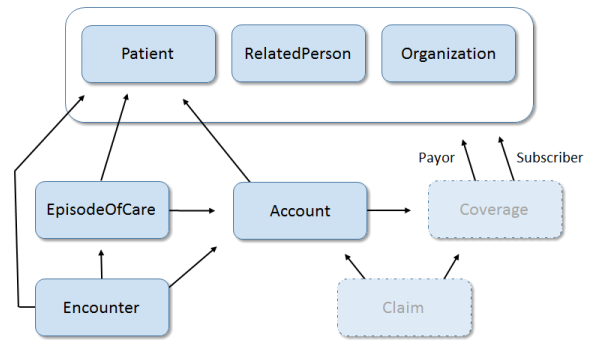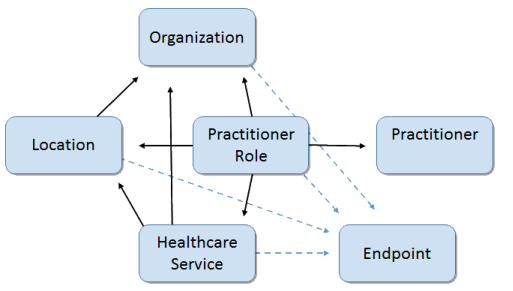This page is part of the FHIR Specification v4.1.0: R4B Ballot. About the R4B version of FHIR. The current version which supercedes this version is 5.0.0. For a full list of available versions, see the Directory of published versions  . Page versions: R5 R4B R4 R3
. Page versions: R5 R4B R4 R3
Work Group Patient Administration  | Standards Status: Informative |
The Administrative module covers the base data that is then linked into
the other modules for clinical content, finance/billing, workflow, etc.
It is built on the FHIR technology platform modules.
Before any clinical data can be recorded, the basic information of the patient must be recorded, and then often the basis of the interaction (such as an encounter).
Track people involved in receiving healthcare, the basics nearly everything else references back to
| Name | Aliases | Description |
| Patient | SubjectOfCare Client Resident | |
| RelatedPerson | ||
| Person | ||
| Group |

Implementation Note: Patient linking should also be considered when evaluating searches with references to other resources. e.g. searching for a patients' conditions for a patient.
At present the specification does not define if the links should be also followed to include conditions that reference the linked patients too. We are currently seeking feedback on this.
Implementation Note: The Person resource may be used as a centralized register of people that may eventually be involved in healthcare, and could be used as the central core demographics register.
However, the fields/values in Person are duplicated in the other resources, and in many cases the Person resource will be hosted on external systems.
Most clinical activities occur grouped in some way. Long term care is typically covered by an EpisodeOfCare, whereas short term care is covered by encounters. Account associates the tracking of transactions back to a Patient (or other resource). Flag is just used to highlight a warning or other notification about a patient (or other resource)
| Name | Aliases | Description |
| EpisodeOfCare | Case Program Problem | |
| Encounter | Visit | |
| Account | Cost center | |
| Flag | Barriers to Care, Alert |

Implementation Note: Resources shown with a dotted box are described in other sections of the specification:
CoverageandClaimare from the section on Finance.
Service Provider Directory resources are usually stored in the administration section of applications, and may even be synchronized from external systems.
| Name | Aliases | Description |
| Organization | ||
| Location | ||
| Practitioner | ||
| PractitionerRole | ||
| HealthcareService | ||
| Endpoint |

The Scheduling/Appointment resources permit the planning of encounters to occur and follow on with other clinical activities.
| Name | Aliases | Description |
| Schedule | Availability | |
| Slot | ||
| Appointment | ||
| AppointmentResponse |

Other assets are often registered in the administration system, and maintained as master files.
| Name | Aliases | Description |
| Device | ||
| DeviceDefinition | ||
| DeviceMetric | ||
| Substance |
Patient privacy is handled with security labels and tags in the Resource Meta property. This is the standard way in which that the FHIR specification provides this supporting information to a sub-system that implements it (which is not defined by FHIR).
One of the more common use cases is for marking a patient as being a celebrity.
Note that privacy considerations apply to Person, Practitioner and RelatedPerson records in addition to Patient's.
While Organization, Location, Device and other non-person-identifying records are generally subject to less stringent security precautions, such data must still be protected to avoid safety issues (e.g. someone maliciously changing the ingredients associated with a drug to cause/fail to cause alerts)
Devices can be linked to Patients. If this occurs, they must be protected as any other patient-linked element
For more general considerations, see the Security and Privacy module.
Administration Resources are cornerstone resources that are used by clinical and other domains of the FHIR Standard.
The Patient Administration is currently working through resources that support:
Many of the administrative resources are part of the core resources that most systems
use first and have formed the basis for most people's first experiences with FHIR.
However this limited exposure has still to be proven in all contexts, such as veterinary, public health and clinical research.